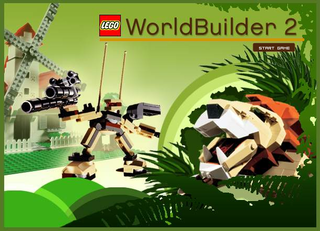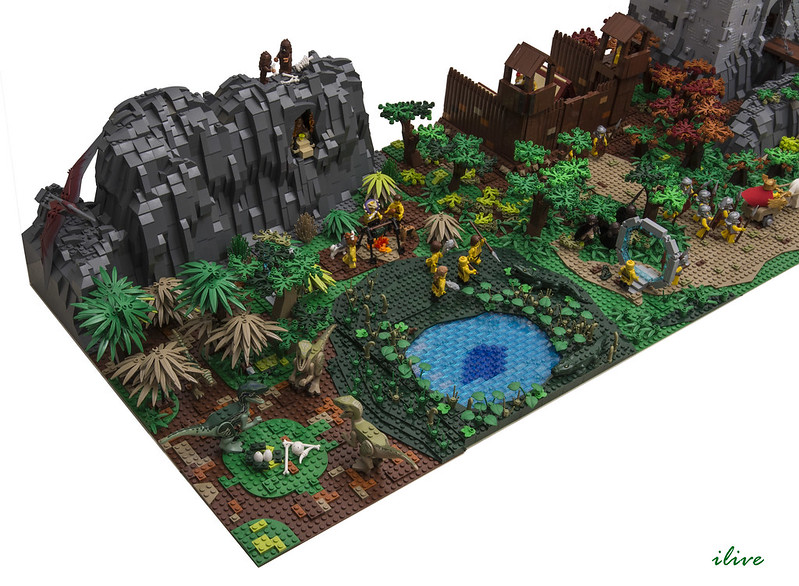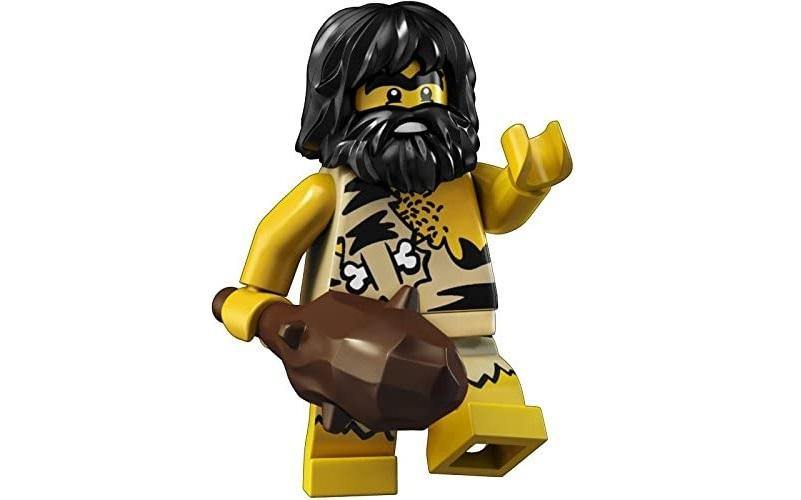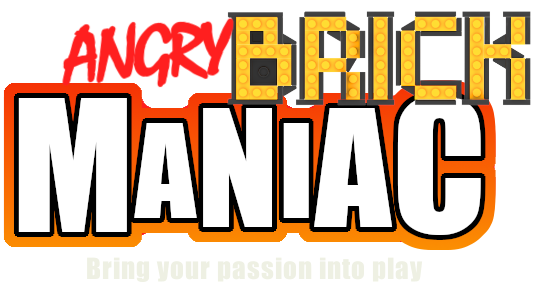As one may quickly gather, we talk about LEGO themes and storytelling (or the lack thereof!) quite a bit around here. Naturally, combining our favorite building pastime with the tabletop role-playing game (TTRPG) niche was bound to happen. Some of you may be interested in getting started with your own adventure. So then, you may also want to “build” your own fantasy world to use in a TTRPG? Alright. Let’s see some world building tips from the perspective of the resident LEGO maniac.
Start with the Basics. Really.
First, we need to come up with our world concept. This is usually a single sentence that describes the feel of the world. You don’t need to describe all the various stuff that happens in the world – like two kingdoms fighting or the whole backstory of competing factions – unless one such event changed the world completely, to the point where you can’t speak of it unless you include said event.

For example, the Forgotten Realms, the main setting for Dungeons and Dragons, can be described as “High Fantasy featuring states inspired by real-world equivalents”. This might not be the best representation, but it helps the other person quickly understand that hey, this place has knights and Vikings and ancient Greek-inspired dudes.
For our example world here, we will do “Prehistoric Fantasy”. It’s just two words. But it gets the point across, right? Dinosaurs and early humans is what most of you thought.
Although we’ll use this world as an example when examples are needed, all the basic principles in here and in following articles on the subject can be used to create any kind of world. So no worries if you don’t like dinosaurs (though I may judge you a little bit).
So, coming up with a concept is probably the easy part. You can spend as much as you like coming up with different ones – and you can connect a bunch of them too… kind of like LEGO bricks, actually. But when it comes to actually creating something out of a concept– oh boy, there’s the challenge.
Start Small and Build Outward.
The best way to start is to keep things small and contained. Nobody – and I mean nobody – will care if you explain the history of your world to them year by year, epoch by epoch. Their eyes will gloss over after a while, and that’s a prospective player lost.
By starting small, we can get the hang of things without confusing even ourselves.
So let’s start with the smallest thing – a town, probably of about five hundred people, if that. For our fantastic and glorious prehistoric world, if we want to keep things relatively historically accurate, we’d have a town of about a hundred people, if not less. Of course, we’re combining dinosaurs and prehistoric humans, so all historicity has kinda gone out of the window already, so feel free to do what you like in terms of population in this context.
Now the town needs a name. Let’s call it “Mammoth’s Rest”. It also needs a history – and this is another trap, because you can – and you probably will – spend hours coming up with one. But we have to keep it simple, and so let’s say the following:
“Mammoth’s Rest was founded fifty years ago as a small hunting post to hunt mammoths. In the years since, it has flourished as more skilled hunters have joined.”
That’s it. That’s the entire history.
Next, we need people to live in Mammoth’s Rest. Again, let’s keep it simple. As you play more and more TTRPGs, you’ll realize there’s a handful of folk that need to exist in every city, since the players in your game will often have need of them.

The first of those is the town leader. If you like, you can make up a tribal council, but it helps if the players only have to interface with one member, as it’s easier for you and them to roleplay and remember names and personalities. If you wanna make a game heavy on politics and intrigue, feel free to create a council however – but we’ll talk about types of games and how they affect the world another time.
Next you’ll need a merchant of some kind. This is the first town the players will visit, so no need to have them sell mystic items or high-level equipment. Just the basics will do.
You’ll also need a blacksmith, someone able to sell the players a few weapons and pieces of armor and fix up what they already have if need be.
Finally, you’ll need an innkeeper. How else can people start at a tavern?
You can of course add more people if you feel like it, like perhaps a leader for the town’s guards. But those fundamental four are usually enough, at least at first.
Again, let me stress historical accuracy again here. If you want to be accurate, a blacksmith simply shouldn’t exist, at least not in the medieval sense. Neither should an inn or an innkeeper. And you can definitely make your world not have them, or you can come up with a suitable equivalent. It’s gonna be harder, but you can. However, since this is a TTRPG world and players typically expect some stuff – which also makes our lives easier – we can just keep these dudes and move on.
Visualization – A World Building Essential
So now let’s say we have “Groth” the town leader, “Marta” the innkeeper, “Sorus” the merchant and “Argus” the blacksmith. You can easily use LEGO figures to represent all of them, of course. Not to mention the convenience of quickly swapping out elements for your characters as the need arises. In that regard, LEGO is better than traditional miniatures.
In general, it helps if the players have a visual representation of who they’re supposed to be interacting with – at worse, you should have a sentence of description to say to them. Something like: “Groth is a strong man in his fifties, with graying hair and a small belly” does the job in a hurry.
You also need a small description for your town. Again, keep it simple. “The town of Mammoth’s Rest is made up of roughly fifty clay houses with long straw roofs. As you walk through its streets, you see hunters prepare for the day, while others return with their bounties.”
As with the characters, it helps players to visualize this stuff during play. If you have LEGO equivalents and built scenery, definitely use them of course!

Also, the LEGO or other visual representations of the town, players – and later, monsters – don’t need to be one-to-one equivalents to the descriptions. If your character has grey hair but you only have figures with brown hair, it’s fine. Nobody cares. People just wanna see where people are on a map and know who’s who.
That’s it for this time. By now, you have a small town with a simple description and a handful of NPCs (“non-player characters”, for those too quiet to ask) for your players to interact with. Another time, we’ll see how to develop quests coming from those NPCs, and how to fill out your town and eventually, your world.
How do you build out your fictional world? Do you have a a go-to method that you keep falling back on? Let me know in the comments.
Hey reader! Thanks for helping support this site. As an Amazon Associate I earn from qualifying purchases.

Lego is the best building bricks that has been around for so many years, it is like an institution. And though they may not have as much variety of new themes that are released today, I think the potential for world building continues to be another huge success. In my experience, Lego and the capacity for detail in the system lights up the imagination of all builders, players, regardless of their age, and one can add and build to your own heart’s content.
Great concept. I am not much into LEGO or world play myself but I am sure for those who are this will take off. I love how you explain things.
What a great idea to create your own world of LEGOs, or some other type of miniature materials. It never occurred to me that this was a thing!
From a practicality standpoint, I have to ask about space and storage. Are you able to leave your civilization intact in a separate room? Do you have to tear down and rebuild it? That seems like it would be a nightmare to do. I am envisioning a childhood friend that had a huge train set in his basement on a giant table. That would seem like the best way to handle this, but I would love to know how you do it!
Depending on your situation, space and storage is definitely a factor that you may need to consider. I hear ya.
A major upside to using LEGO for world building (conceptualizing, role-playing, or just plain diorama building) is it’s modularity and repurpose-able system… but the downside to that is that you do have to either have a place to keep your setup stored, or break it all down to put away whenever going unused. Ugh. And especially with TTRPGs, players typically want to keep a memento of the tabletop adventure/campaign after it’s all over, and using LEGO makes it all too easy to let your “memento” dissolve back into a collection of bricks! Another downside, I guess.
But even with the drawbacks of LEGO vs standard miniatures, if you can get your sorting figured out, LEGO adds huge fun to building a world from the ground up. You can make a project of displaying your figures and scenes as a diorama (or even incorporate into your overall décor). You don’t have to have a crazy dedicated LEGO or game room.
This guy (TerrainTutor) shows how he stores his miniature scenery, and though it is not LEGO, it can give you some ideas.
Using LEGO for tabletop gaming. Huh, interesting. It makes a lotta sense though. Imagine a fully developed Bionicle tabletop RPG game complete with buildable miniature figures! So much potential evolution, one can dream.
Right on. There’s a a lot of potential that LEGO only tentatively tapped into back in the days several years ago with the LEGO Games kits. More could be done. And BIONICLE and tabletop could be quite a match – the elements are there for sure… Until LEGO actually does something, you may be interested in checking out the tabletop roleplaying game project dubbed “Doronai Nui”. Here’s a page from the creators’ blog! https://www.patreon.com/posts/58068719